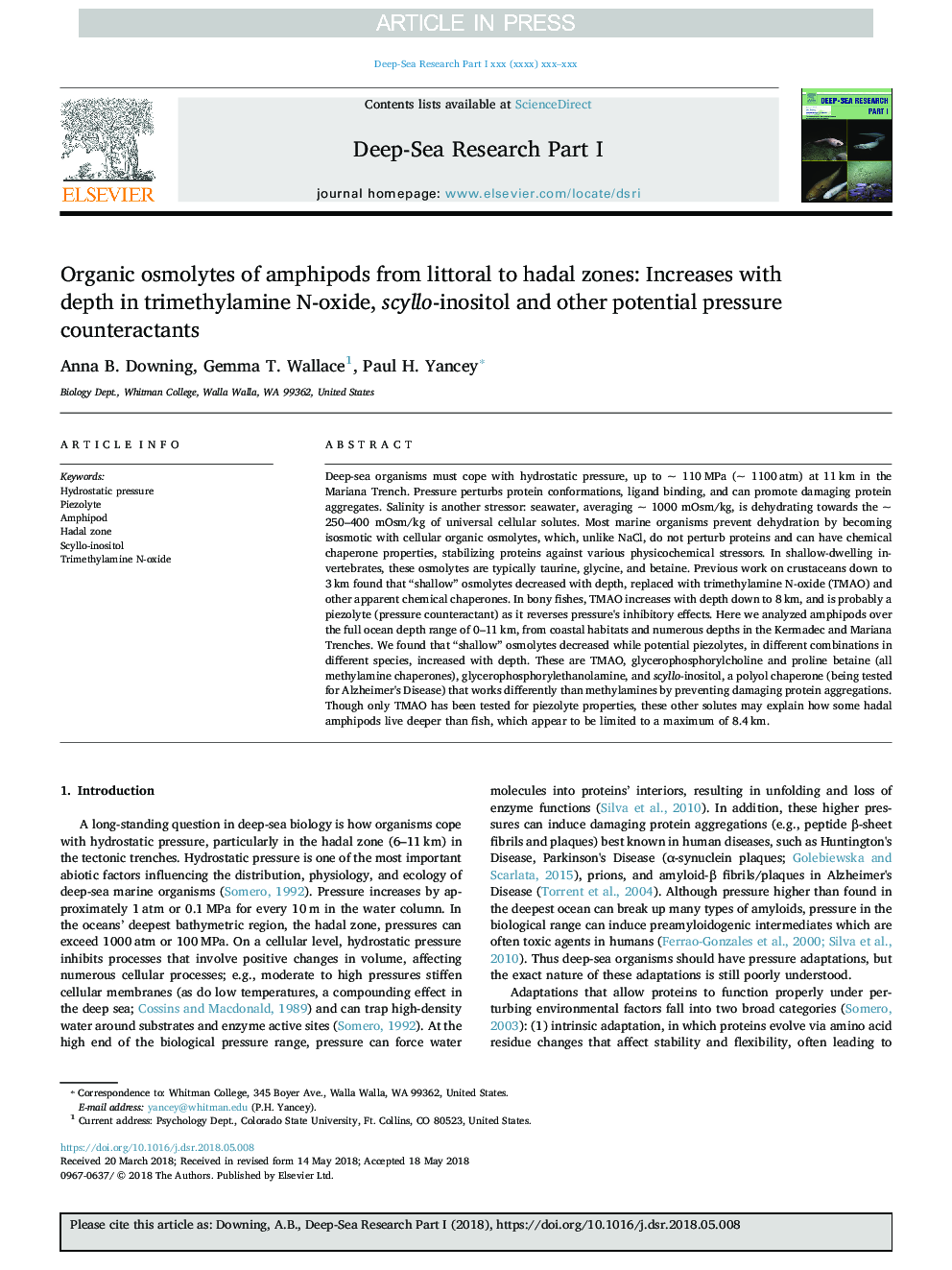| Article ID | Journal | Published Year | Pages | File Type |
|---|---|---|---|---|
| 8884184 | Deep Sea Research Part I: Oceanographic Research Papers | 2018 | 10 Pages |
Abstract
Deep-sea organisms must cope with hydrostatic pressure, up to ~ 110â¯MPa (~ 1100â¯atm) at 11â¯km in the Mariana Trench. Pressure perturbs protein conformations, ligand binding, and can promote damaging protein aggregates. Salinity is another stressor: seawater, averaging ~ 1000 mOsm/kg, is dehydrating towards the ~ 250-400 mOsm/kg of universal cellular solutes. Most marine organisms prevent dehydration by becoming isosmotic with cellular organic osmolytes, which, unlike NaCl, do not perturb proteins and can have chemical chaperone properties, stabilizing proteins against various physicochemical stressors. In shallow-dwelling invertebrates, these osmolytes are typically taurine, glycine, and betaine. Previous work on crustaceans down to 3â¯km found that “shallow” osmolytes decreased with depth, replaced with trimethylamine N-oxide (TMAO) and other apparent chemical chaperones. In bony fishes, TMAO increases with depth down to 8â¯km, and is probably a piezolyte (pressure counteractant) as it reverses pressure's inhibitory effects. Here we analyzed amphipods over the full ocean depth range of 0-11â¯km, from coastal habitats and numerous depths in the Kermadec and Mariana Trenches. We found that “shallow” osmolytes decreased while potential piezolytes, in different combinations in different species, increased with depth. These are TMAO, glycerophosphorylcholine and proline betaine (all methylamine chaperones), glycerophosphorylethanolamine, and scyllo-inositol, a polyol chaperone (being tested for Alzheimer's Disease) that works differently than methylamines by preventing damaging protein aggregations. Though only TMAO has been tested for piezolyte properties, these other solutes may explain how some hadal amphipods live deeper than fish, which appear to be limited to a maximum of 8.4â¯km.
Related Topics
Physical Sciences and Engineering
Earth and Planetary Sciences
Geology
Authors
Anna B. Downing, Gemma T. Wallace, Paul H. Yancey,
